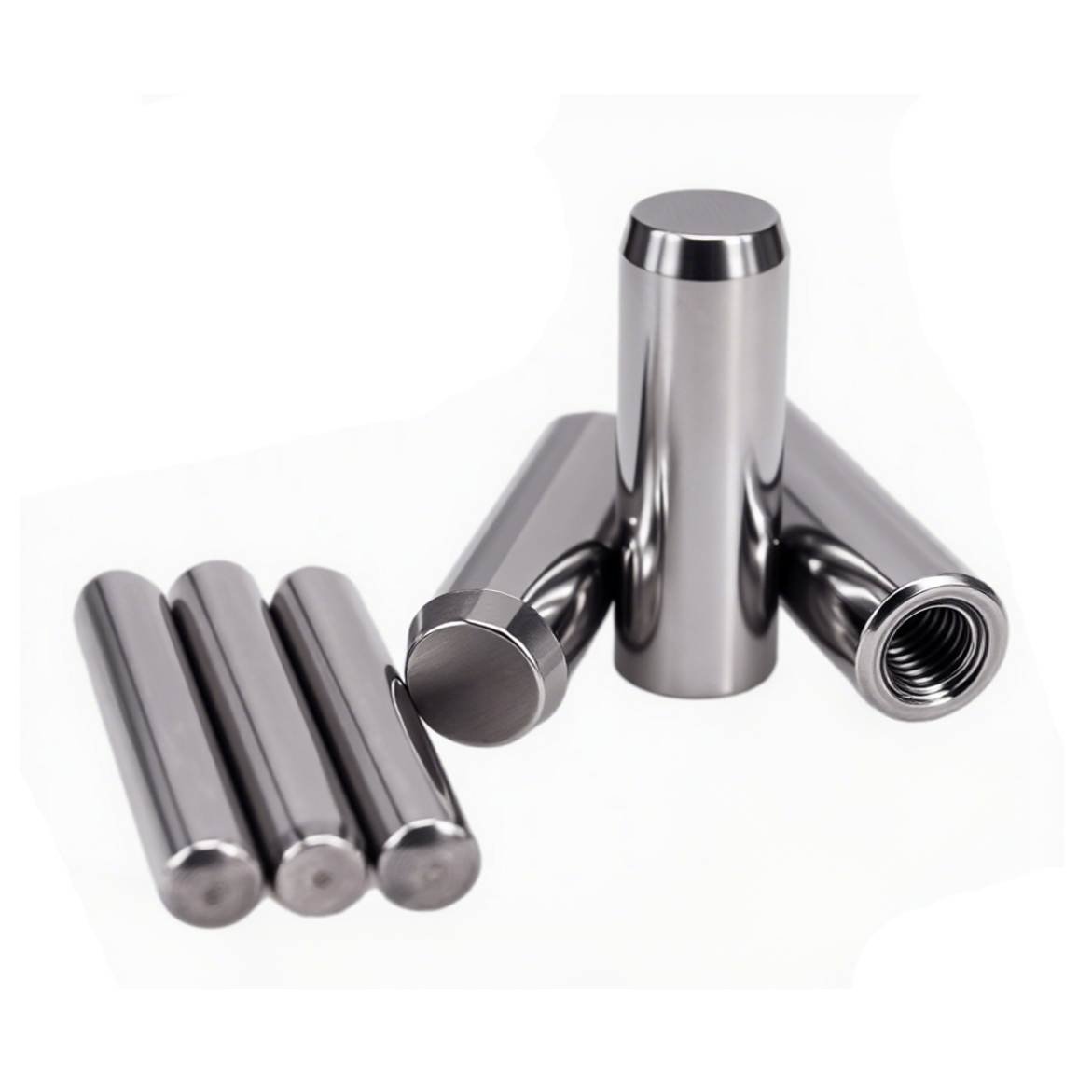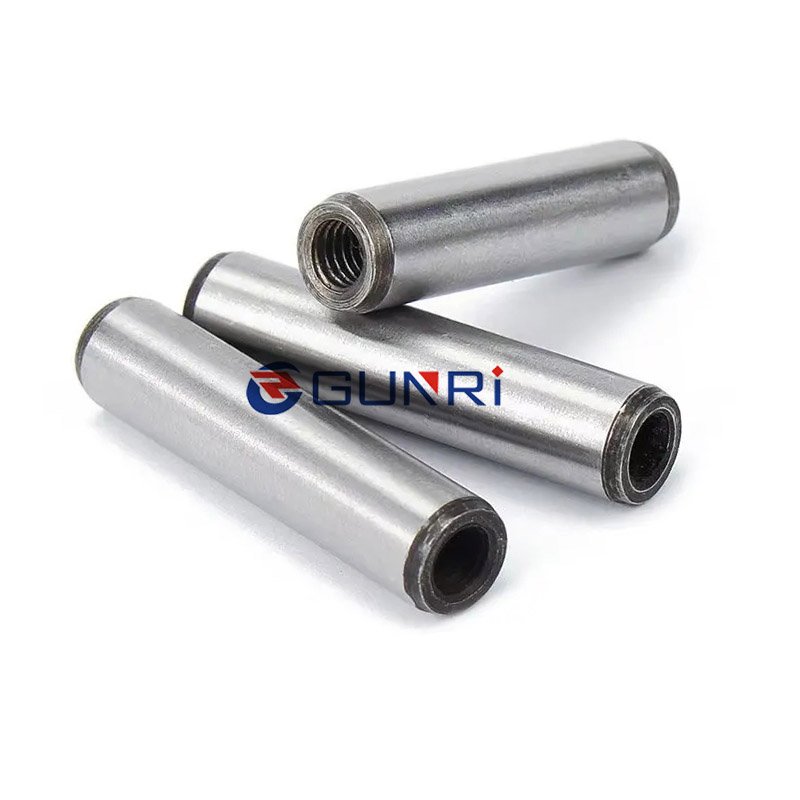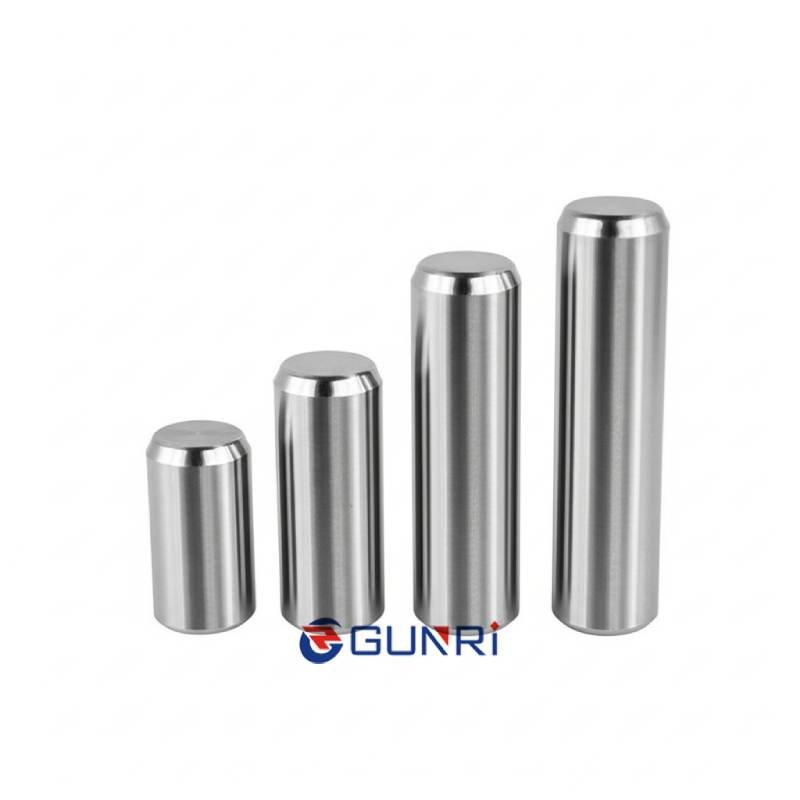Precision Ground, Hardened, Custom Pins
Dowel pins are cylindrical metal components used to precisely align, locate, or secure two or more parts in machinery and tooling applications. They are essential in molds, dies, jigs, and automation systems. We offer a full line of standard and custom dowel pins to meet your engineering requirements with consistent accuracy and global-ready quality.
What is a dowel pin?
A dowel pin is a solid cylindrical pin used for precise positioning, alignment, and joining of mechanical parts. It is a passive alignment element, typically installed in a tight-fit hole to ensure components assemble in exactly the same position each time.
In automation engineering, dowel pins are essential to:
- Maintain repeatable alignment in machine parts and fixtures.
- Prevent shifting or misalignment under vibration or load.
- Allow quick assembly/disassembly without recalibration.
They are widely used in:
- Robot arms
- Linear motion modules
- Vision system mounts
- Jig and fixture setups
- CNC and press tooling
Common Standards & Their Use in Automation
| Standard | Typical Use in Automation | Features |
|---|
| DIN 6325 | CNC fixtures, robotic tooling | Hardened steel, ground finish, tight tolerance; used for fixed and replaceable precision alignment. Ideal for repetitive assembly tasks. |
| ISO 8734 | Modular equipment alignment, end-effectors | Similar to DIN 6325, but ISO standard; used in global OEM machines. Widely available and compatible with metric automation parts. |
| DIN 7979 (Tapped Dowel Pins) | Heavy machine base plates, press tools | Has internal threads for easy extraction. Useful in setups requiring frequent disassembly. Often used in stamping and forming equipment. |
| MSTM / MSTP / MSTH (JIS Tapped Pins) | Japanese-origin equipment, automation lines in electronics assembly | Threaded for pull-out; often found in automation lines made in Japan or Korea. Preferred when space is limited but repeatable alignment is required. |
| ISO 2338 (Press-fit only, unhardened) | Light-duty automation like conveyor fixtures | Low cost, easy to machine; good for low-load applications. Not recommended for high-vibration or high-precision setups. |
How it work?
The working principle of a dowel pin is based on precision interference fit or close-tolerance slip fit between the pin and the hole. It is not a load-bearing fastener, but a mechanical locator.
When inserted into accurately reamed holes on two mating parts, the dowel pin:
- Aligns the parts in exact position by eliminating lateral or rotational play
- Repeats that exact position every time the parts are assembled
- Transfers shear force between the parts (if designed for that)
- Prevents misalignment, especially in high-speed or high-vibration environments
The dowel pin doesn’t clamp or hold the parts together—that’s the job of bolts or screws. Its sole purpose is to ensure repeatable, precision alignment.



